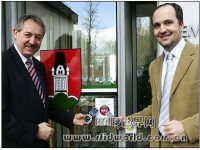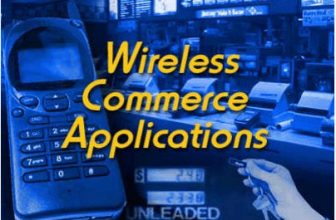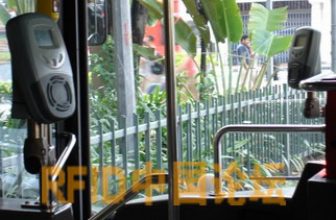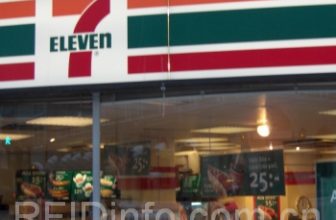
Austrian NFC Research Laboratory launches smart poster application
[ad_1]
The NFC research laboratory on the Hagenberg campus of the Austrian University of Technology uses NFC technology to develop a smart poster application to provide tourists with information about the town of Hagenberg. According to the project partners, this is the first NFC smart poster project in Austria.
The project started in January last year. The staff erected 20 information signs and maps embedded with NFC RFID tags in scenic areas and other areas of the city. NFC uses short-range 13.56 MHz RFID technology to safely transfer information between two NFC devices. An RFID tag is embedded in the NFC logo on each poster. Passing tourists can use the NFC mobile phone to approach the labeling poster and download the text description and pictures of the relevant tourist attractions to the mobile phone display.

Josef Langer and Viktor Sigl show NFC mobile phones to read smart posters
The mobile phone downloads data from a web server provided by Nexpert, and Nexpert is a partner of this project. Nexpert manages the content of tags through its Content Management System, which can also be used in other NFC-based travel information systems. Other sponsors of the project include mobile operators Mobilkom and NXP.
According to Josef Langer, the head of the laboratory, the smart poster project is a complete project with back-end server support and real-time access to information. “It is a model project for other cities and tourist areas. Just buy the tag and any city can develop it.” At present, Josef Langer admits that because fewer people have NFC phones, smart poster applications are not used much. But travelers to Hagenberg can borrow Nokia 6131 mobile phones from the laboratory to test smart posters.
The NFC laboratory researchers also developed a remote control device that can move along three axes, so it can test the electromagnetic field of NFC from all angles. The robot can measure the distance between the NFC device and the NFC tag, test the interaction between the devices, and analyze the ability of the NFC device to transmit large amounts of data. “The robot allows us to perform tests automatically and get most of the target results,” Langer said.

The NFC research laboratory uses a remote control device to automatically measure the reading distance and data transmission between the NFC device and the NFC tag
According to Langer, the NFC device tested by the control device can be moved in multiple directions, so that the measurement results of the connection status can be displayed in 2D or 3D. A computer controls the remote control device, calculates the measurement methods related to the device, and provides measurement diagrams. Moreover, an oscilloscope can measure the field amplitude to help determine which NFC device cannot work with other NFC devices.
In 2006, the NFC laboratory carried out a series of NFC test projects for the first time on campus. Since then, the laboratory has studied how to expand the functions of NFC chips, the integration of NFC hardware and software, and the development of energy-saving NFC chips.
The laboratory currently plans to hold its third NFC conference from February 23 to 26, 2009. On the first day of the conference, researchers will discuss work with other companies such as Mobilkom and Nokia; on the second day, participants will discuss NFC-related businesses; on the third day, participants will participate in a scientific seminar sponsored by IEEE.
[ad_2]






